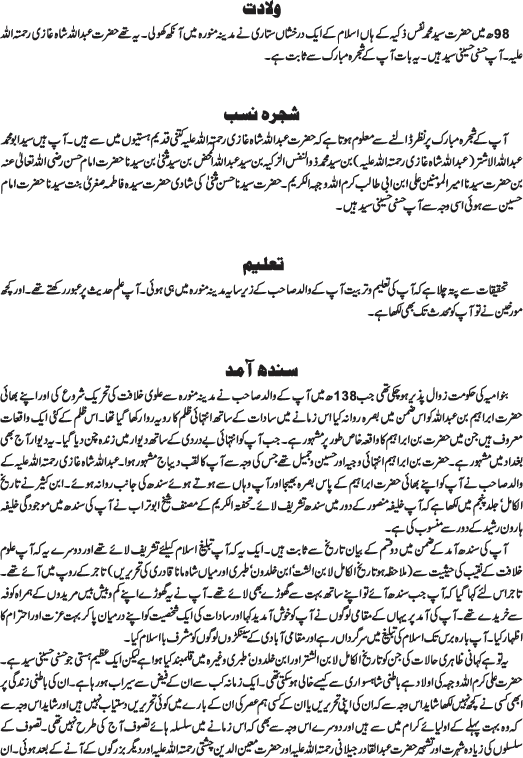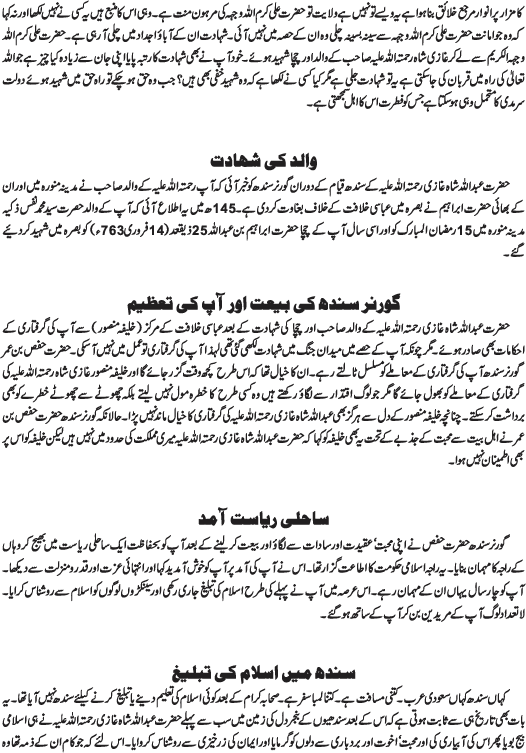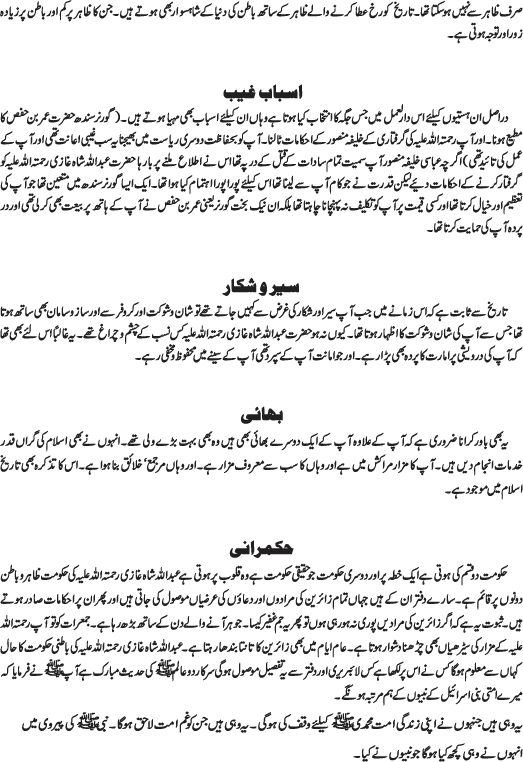Every day, near about sunset, a steady stream of devotees crawls towards a green dome. Their destination is a grave draped in flowers. All wish to touch it but the marble railing comes their way. Not to feel belittled, they step back; sit cross-legged with head down and recite verses from Holy Qur’an. Soon the place would become congested and the khadims would persuade some in deep slumber to move out to make way for others.
There are separate sitting arrangements for men and women but all mumble their secret wishes to the saint. Desperate women, under threat of divorce, pray for a son. Some are seeking good fortune, some pleading for the health of their loved-ones. Drug addicts ask for forgiveness and an opportunity to live a normal life. This is an unusual crowd. Parents have their children with them and persuading them to ask the saint for high marks in the next examination. The young ones raise their tiny hands for blessing of the Sufi Saint.
At first, it looks as if the devotees are from the city or nearby places. But a closer look would reveal some un-common faces. Jan Muhammed has come all the way from a far off city, Rahim Yar Khan. He has his wife and three kids with him. He proudly disclosed: “We come here for Ziarat, not every year but when we can. We wish we could afford to come each year,” Ms Saima Khan, from another distant place, Quetta, a mother with two children, visits the Mausoleum annually. “We come for Manat and to seek solutions for our problems.”
THE SHRINE
Perched on a hilltop amidst a posh residential area and just a few minutes walk from the Clifton beach at Karachi (Pakistan), the place is a magnet to the devotees. It has a tall square chamber topped with green-and-white striped dome. Centuries old tiles decorate the walls and green flags flutter giving a majestic view.
Worth seeing are cast-iron cooking pots containing Sindhi Biryani, a rice dish. It is always ready and anyone paying about US$ 6-8 can buy 8 kgs of sizzling rice with chicken or mutton or beef. Who would eat this enormous quantity? Not the buyer but some of the visitors mostly poor and homeless, runway children and heroin addicts.
In fact, the shrine offers the underclass some spiritual sustenance and a safety net in the shape of free rations.
Moving around these shops is an experience in itself. The place is extremely lively. Many people, sitting on tea stalls, could be heard narrating how their wishes were granted. A famous myth about the shrine is that Karachi never had a tropical disaster in the past thousand years because of the shrine’s blessing. It appears to be true as in the recent past two powerful storms have avoided Karachi when they were less than 10 hours away from the city and deflected to hit the Indian city of Gujarat.
Moreover, the tomb is just adjacent to Arabian Sea. The water found in the area is totally brackish except for miraculous sweet water tricking behind the shrine. In fact this is holy water and many ailments are cured by drinking it. This is vouched by the people who gather each day for collecting the water in small bottles.
Moreover, the tomb is just adjacent to Arabian Sea. The water found in the area is totally brackish except for miraculous sweet water tricking behind the shrine. In fact this is holy water and many ailments are cured by drinking it. This is vouched by the people who gather each day for collecting the water in small bottles.
THE SAINT
Hazrat Abdullah Shah Ghazi is a famous Sufi Saint. He was born in the year 720 in Medina, the second holiest city in Islam. He was the great grandson of the Holy Prophet from the historical tribe of Bani Hashim. He was educated in Medina where he learned Qur’an and Hadis. He arrived in Sindh in the year 760 as a merchant and brought with him a large number of horses purchased from Koofa, Iraq. He was given a warm welcome as he belonged to saadat family, the noblest in Islam.
Another version has been given by an internationally acclaimed scholar and historian, Dr. Umar Bin Mohammad Daudpota . According to him, real name of Abdullah Shah was General Abdulla bin Nabhan. He along with another senior commander, Badil bin Tuhafa, had launched a military expedition against the local ruler, Raja Dahir. The assault was a strong reaction against activities of Raja Dahir who was encouraging the pirates to raid Arab ships. In particular, the war was triggered when a noble woman wrote to the then Governor of Basra, Al-Hajjaj bin Yousuf, that she had been kidnapped and be rescued. A letter was sent to the Raja Dahir and but he replied that he did not have any control over pirates in his kingdom. Consequently, the war ensued at Debil, modern day Karachi, but the Raja did not surrender. Later, the mission was entrusted to a young commander, just 17 years old, Muhammad Bin Qasim. He defeated the Raja and rescued the noble woman and other Muslim prisioners.
While Muhammad bin Qasim forged ahead to far off areas like Multan (Punjab), Abdullah Shah continued to live in Sindh as he loved the people and thought they needed him for teaching of Islam specially love for humanity.
Beside preaching, Abdullah Shah was very fond of hunting. In old times, Sindh had plenty of wildlife like ibex, urial, blue bull, gazelle and deer. In his passion for hunting, Abdullah used to go far from the base. Once he had gone far enough and was intercepted by the enemy. Out-numbered, he preferred to fight rather than submitting. It is because of his display of valor he was given the title of “Ghazi” meaning “victorious”.
He died in the year 773 near the sea while dressed in war attire. He was buried at the present place, atop a hill in Karachi.
In December each year, a great festival is held at the shrine for 3 days marking the anniversary of Abdullah where Muslims from all factions come in large number. The festival is enjoyed even by some non-Muslim as the saint is revered by all for preaching love, tolerance and politeness.
OF TOMBS, SHRINES AND DARGAHS
A tomb is a burial chamber. It contains remains of the dead. It could be of any famous person like a scholar or a politician. Anıtkabir is the tomb of Mustafa Kemal Ataturk, the leader of Turkish War of Independence and the first president of the Republic of Turkey.
A shrine is a holy or sacred place. In Muslim world a Shrine may contain relics, or other such objects associated with the figure being venerated. Hazratbal Shrine in Kashmir contains a hair of the Holy Prophet. The relic is displayed on various occasions related with the life of the Prophet and his four holy companions.
A Dargah has much wider meanings. It could be a portal or threshold. These usually contain mosque, Madrassas (schools), hostels (khanqah), residence of the teachers or caretakers or other structures for community. Normally, it is a shrine built over the grave of a revered religious figure, often a Sufi saint.
There are many such terms like mausoleum and monument for tomb, chapel or temple for shrine and ziyarat and keramat for dargah.
SUFISM
Sufi means soft and pure like wool. Most Sufis wear in-expensive wool clothes for unification. A Sufi seeks direct experience of Allah and discards all that does not belong to the inner-self.
Initially the term referred only to those who had achieved God realization, but now it applies to anyone who follows a spiritual path. The goal is to align with the will of God. Sufis agree that all religions offer a path to salvation. Basically, a saint in any religion is equal to a saint in any other religion because they are inspired by the same Divine source. The philosophy is universal in nature.
There are many Sufis who are not Muslims and there are many Muslims that are reluctant to consider Sufism as part of Islam.
DHOL
Dhol is a big, oval-shaped drum, normally a meter long and half a meter wide. It is slung with a string around the neck and played by using two sticks. The loud sound of a dhol can be heard from great distance. A low, steady beat can create calmness whereas a stronger upbeat can stir anyone into action or frenzy. One can find inner peace and relaxation as the drumbeat has a great healing power.
DHAMAAL
Dhamaal is a devotional dance performed by the devotees at tombs, shrines and dargahs. The purpose is to thank God and the saint when their prayers come true. The participants whirl, twirl, twist and turn on the beat of a dhol or drum. Their heart and soul are immersed into a thankful vibe.
It is a mind lifting activity. The rhythm makes you vibrate, oscillate, pulsate, rock and roll. The beat gradually picks up, and keeps going higher and higher. Let all join the festivity like a Sufi and swing to the rhythms of music to get closer to nirvana
QAWWALI
After dhamaal, one comes out of trance and starts hearing the sounds around. First to reach the ears is ‘qawwali’, the eternal Sufi song. Soon one can find some artists singing with passion, their voices rising and falling. One is drawn towards them as if under a spell.
Qawwali is an art passed from father to son. This is a Sufi music: its beauty lies that it is loved by all religions without any discrimination. Hindu devotional songs are synthesized with Muslim poetry – to sing about the unity of God. The poetry is implicitly spiritual, the central themes being love, devotion and longing for Divine.









































































.jpg)

